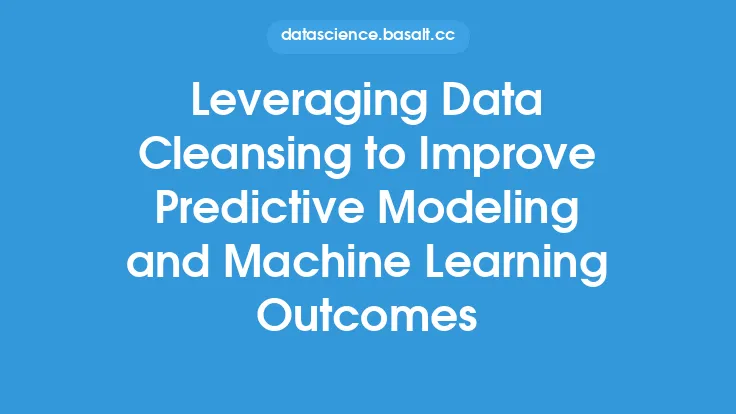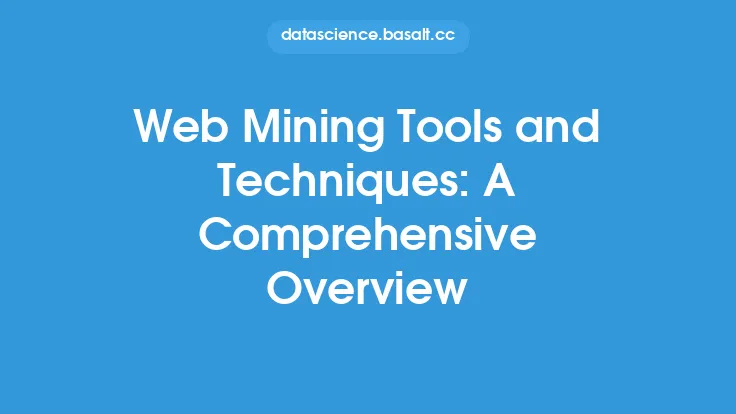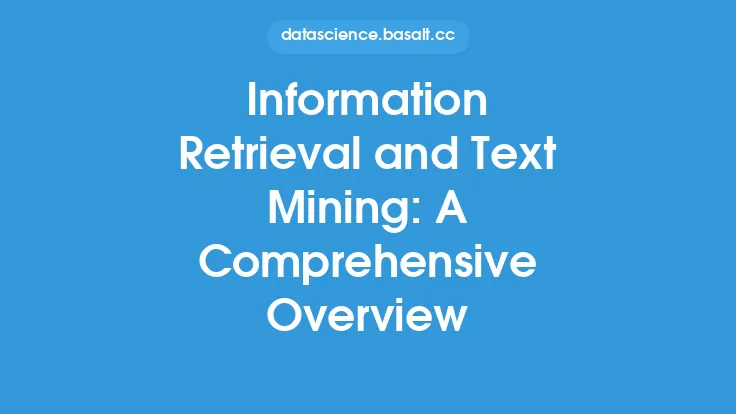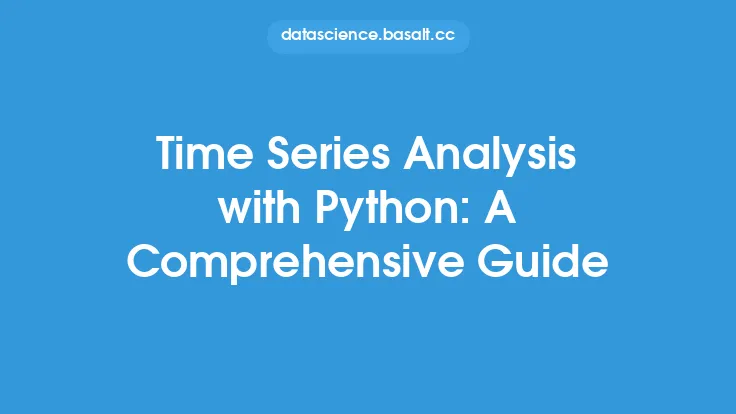Predictive modeling is a crucial aspect of data mining, and machine learning is a key enabler of this technology. At its core, predictive modeling involves using historical data to make predictions about future events or outcomes. This is achieved by training machine learning models on the data, which learn patterns and relationships that can be used to make predictions. In this article, we will delve into the world of predictive modeling with machine learning, exploring the concepts, techniques, and applications that make it a powerful tool for businesses and organizations.
Introduction to Machine Learning for Predictive Modeling
Machine learning is a subset of artificial intelligence that involves training algorithms to learn from data and make predictions or decisions. In the context of predictive modeling, machine learning algorithms are used to analyze historical data and identify patterns and relationships that can be used to make predictions about future events or outcomes. There are several types of machine learning algorithms that can be used for predictive modeling, including supervised learning, unsupervised learning, and reinforcement learning. Supervised learning involves training a model on labeled data, where the correct output is already known. Unsupervised learning involves training a model on unlabeled data, where the model must identify patterns and relationships on its own. Reinforcement learning involves training a model to make decisions based on rewards or penalties.
Types of Predictive Models
There are several types of predictive models that can be built using machine learning algorithms. These include linear regression models, decision tree models, random forest models, support vector machine models, and neural network models. Linear regression models involve using a linear equation to predict a continuous outcome variable. Decision tree models involve using a tree-like structure to predict a categorical outcome variable. Random forest models involve combining multiple decision trees to improve the accuracy of predictions. Support vector machine models involve using a hyperplane to separate classes and make predictions. Neural network models involve using a network of interconnected nodes to make predictions.
Data Preprocessing for Predictive Modeling
Data preprocessing is a critical step in building predictive models. This involves cleaning, transforming, and preparing the data for use in the model. Data cleaning involves removing missing or duplicate values, handling outliers, and transforming variables into a suitable format. Data transformation involves converting variables into a suitable format for use in the model, such as converting categorical variables into numerical variables. Feature engineering involves selecting the most relevant variables for use in the model and creating new variables that can improve the accuracy of predictions.
Model Evaluation and Selection
Model evaluation and selection are critical steps in building predictive models. This involves evaluating the performance of different models and selecting the best model for use in production. There are several metrics that can be used to evaluate the performance of predictive models, including accuracy, precision, recall, F1 score, mean squared error, and R-squared. Model selection involves comparing the performance of different models and selecting the model that performs best on a holdout dataset.
Hyperparameter Tuning and Model Optimization
Hyperparameter tuning and model optimization are critical steps in building predictive models. Hyperparameter tuning involves adjusting the parameters of a model to improve its performance. This can involve using techniques such as grid search, random search, or Bayesian optimization. Model optimization involves using techniques such as regularization, early stopping, and learning rate scheduling to improve the performance of a model.
Applications of Predictive Modeling
Predictive modeling has a wide range of applications in business and industry. These include customer churn prediction, credit risk assessment, fraud detection, demand forecasting, and recommendation systems. Customer churn prediction involves using predictive models to identify customers who are at risk of leaving a company. Credit risk assessment involves using predictive models to evaluate the creditworthiness of loan applicants. Fraud detection involves using predictive models to identify transactions that are likely to be fraudulent. Demand forecasting involves using predictive models to forecast future demand for products or services. Recommendation systems involve using predictive models to recommend products or services to customers based on their past behavior.
Common Challenges in Predictive Modeling
There are several common challenges that can arise when building predictive models. These include overfitting, underfitting, class imbalance, and data quality issues. Overfitting occurs when a model is too complex and fits the training data too closely, resulting in poor performance on new data. Underfitting occurs when a model is too simple and fails to capture the underlying patterns in the data. Class imbalance occurs when there is a significant difference in the number of instances of each class, resulting in biased models. Data quality issues can arise when the data is noisy, missing, or inconsistent, resulting in poor model performance.
Best Practices for Building Predictive Models
There are several best practices that can be followed when building predictive models. These include using high-quality data, selecting the right algorithm, tuning hyperparameters, evaluating model performance, and deploying models in production. Using high-quality data involves ensuring that the data is accurate, complete, and consistent. Selecting the right algorithm involves choosing an algorithm that is suitable for the problem and data. Tuning hyperparameters involves adjusting the parameters of a model to improve its performance. Evaluating model performance involves using metrics such as accuracy and precision to evaluate the performance of a model. Deploying models in production involves integrating the model into a larger system and monitoring its performance over time.
Future Directions in Predictive Modeling
There are several future directions in predictive modeling that are worth noting. These include the use of deep learning algorithms, the integration of predictive models with other technologies such as IoT and blockchain, and the development of more interpretable and explainable models. Deep learning algorithms involve using neural networks with multiple layers to make predictions. The integration of predictive models with other technologies involves using predictive models in conjunction with other technologies to create more powerful systems. The development of more interpretable and explainable models involves creating models that are more transparent and easier to understand.





